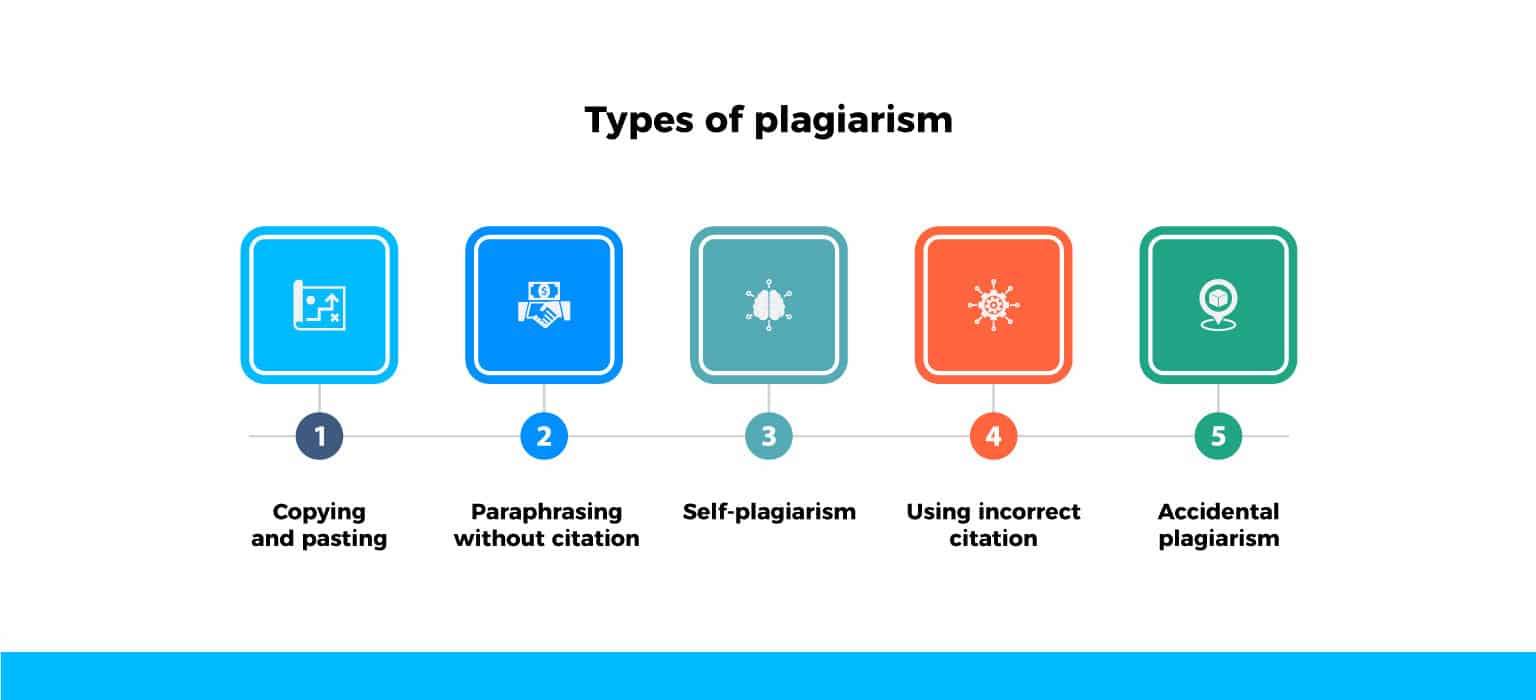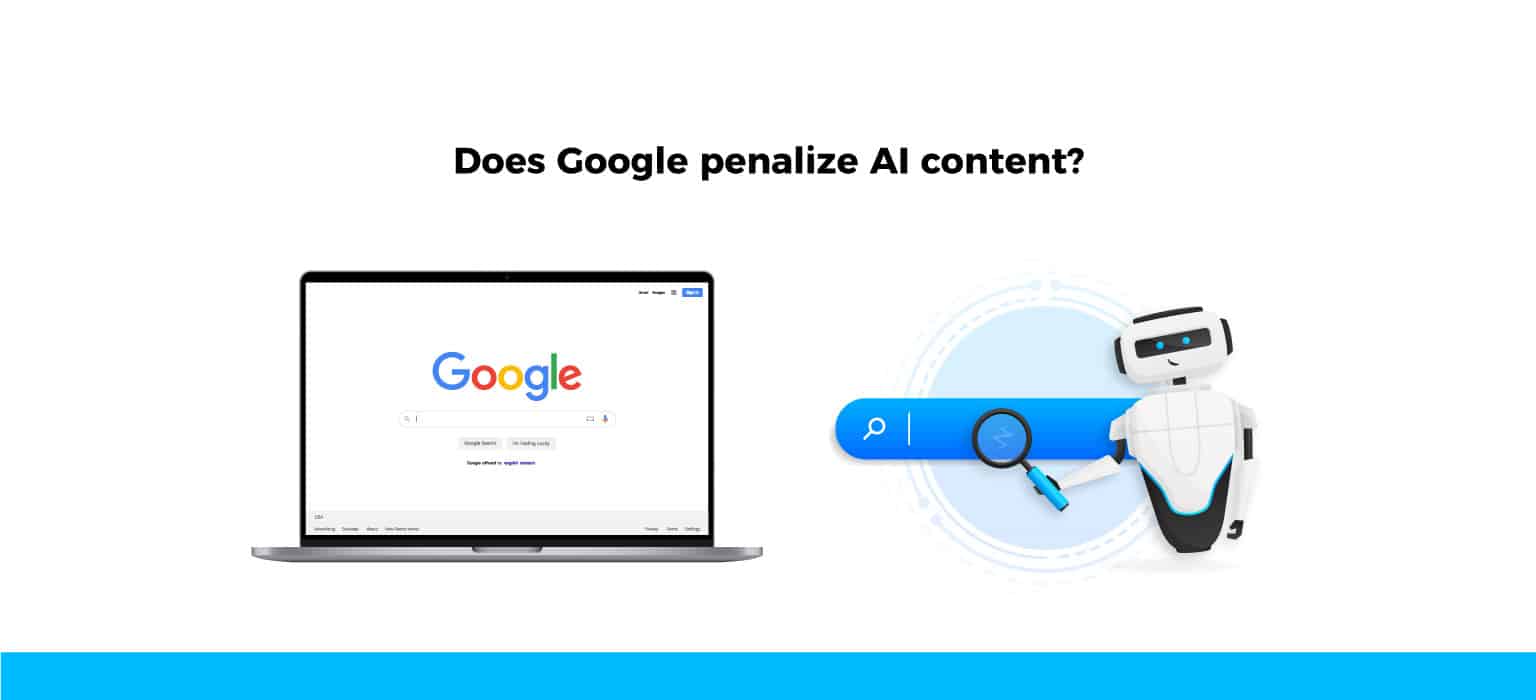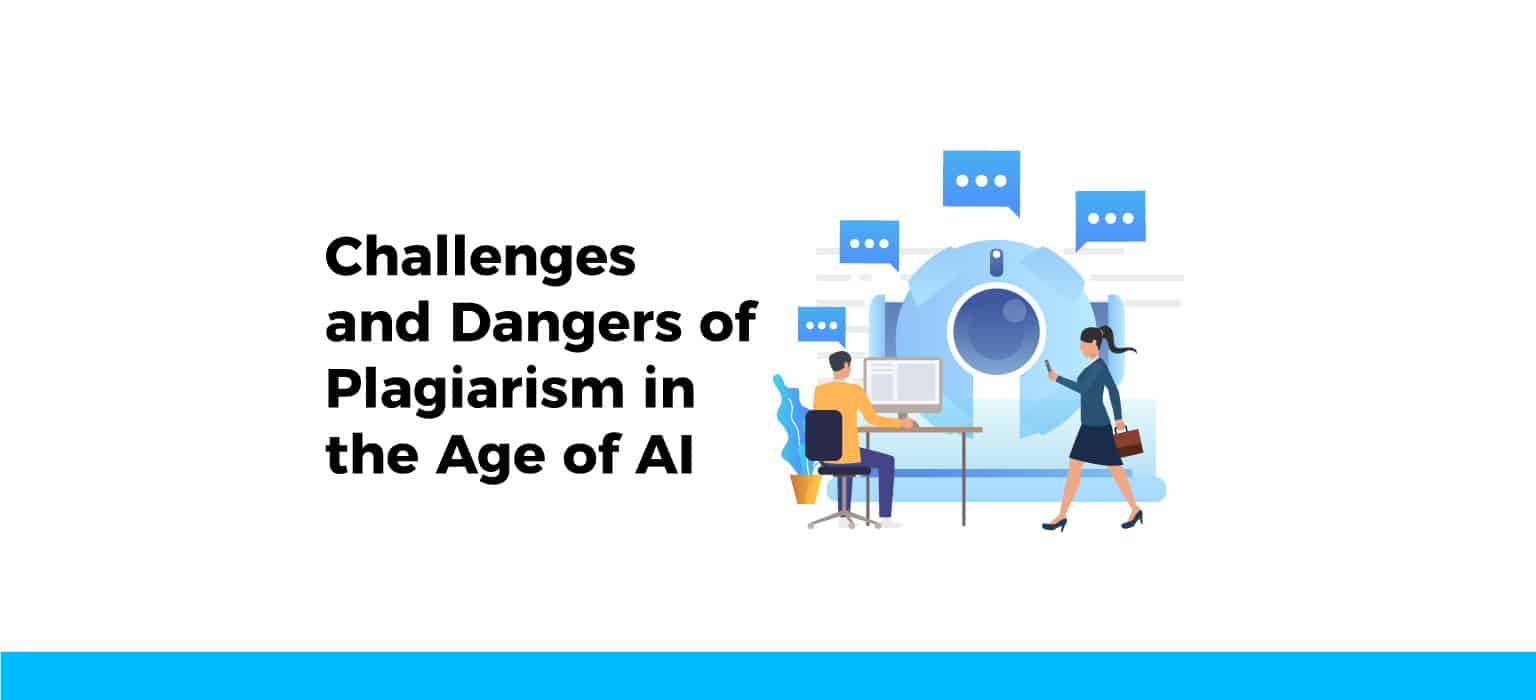The use of another person’s words, ideas, or works without giving them credit or authorization is referred to as plagiarism. Plagiarism can take many different forms, such as pasting text from one place to another, rewriting someone else’s words without giving credit, and submitting someone else’s work as your own or generating it through AI. This has become a serious problem and it pushed people to invent artificial intelligence programs to detect it.
Different sizes of text can be analyzed using AI-based plagiarism detection technologies, which can be compared to sources already in databases to find any instances of plagiarism. These programs employ algorithms to find plagiarism by looking for patterns in sentence structure, word choice, and writing style.
AI can also help in preventing plagiarism by providing writers with tools and resources that can help them avoid unintentional plagiarism. For example, AI-based writing assistants can suggest alternative phrasing and provide citations for sources to help writers avoid accidentally plagiarizing.
What It Is and How to Avoid It at All Costs
Plagiarism is a major academic and ethical offense that can result in serious consequences, such as loss of credibility, academic punishments, and even legal action.
Understanding how plagiarism is intertwined with AI and how to avoid it at all costs is crucial for avoiding it. Here are a few pieces of advice:
- Understand what constitutes plagiarism
Plagiarism can take many forms, including copying and pasting text, paraphrasing without giving credit, using someone else’s ideas without attribution, self-plagiarism, and AI as well. Make sure you understand what plagiarism is and what types of behaviors could be considered plagiarism. - Use proper citation
When using someone else’s work or ideas, always provide proper citations. This includes in-text citations, footnotes, and a bibliography or reference page. Be sure to follow the citation style guidelines required by your institution or professor. - Paraphrase properly
If you are using someone else’s ideas, you may need to paraphrase them. When paraphrasing, make sure you are not just changing a few words and calling it your own. - Use plagiarism detection tools
There are many plagiarism detection tools available that can help you check your work for any instances of plagiarism. These tools can be especially useful for longer documents or when you are unsure about a particular passage. - Manage your time effectively
Procrastination and time pressure can lead to plagiarism using AI. Make sure to give yourself enough time to research, write, and properly cite your work
Types of plagiarism
Plagiarism is a wide field and can be found in many types and forms. It is important to understand the different types of plagiarism and the potential consequences of each in order to maintain academic integrity and needs to be avoided by people at any cost.
Here are some types of plagiarism:
- Copying and pasting
This is the most obvious type of plagiarism, where a person copies text directly from a source and uses it as their own without giving proper credit. - Paraphrasing without citation
When a person rewords someone else’s work without giving proper credit, it is still considered plagiarism. - Self-plagiarism
When a person submits the same work in multiple classes without permission from the professor or institution, it is considered self-plagiarism. - Using incorrect citation
When a person cites a source incorrectly or improperly, it can still be considered plagiarism. - Accidental plagiarism
While it is still considered plagiarism, it is unintentional and can occur when a person is not aware of proper citation practices or forgets to give proper credit.

Global plagiarism
A sort of plagiarism known as “global plagiarism” happens when a work’s entirety or a significant portion is taken from one source without acknowledgment. This can involve summarizing a complete passage, a portion, or even an entire document without properly citing the original author.
Global Plagiarism can be easily detected by plagiarism detection software, and it demonstrates an obvious desire to deceive and misrepresent the efforts of others. This kind of plagiarism is a significant offense against the standards of academic integrity and can have major repercussions, such as decreased credibility, academic punishments, and legal action.
Verbatim plagiarism
When someone copies and pastes content directly from a source without making any edits or giving due credit, they are committing the sort of plagiarism known as verbatim plagiarism. That amounts to verbatim plagiarism, which is the practice of passing off someone else’s work as their own. With the use of plagiarism detection software, it is simple to spot verbatim plagiarism, which is also regarded as a significant academic and moral offense.
Verbatim plagiarism can happen when someone is pressured to complete an assignment, has little time for research, or doesn’t know how to properly cite sources. It’s crucial to take notes in one’s own words, correctly paraphrase, and utilize suitable citation methods in order to avoid verbatim plagiarism.
Patchwork plagiarism
Patchwork plagiarism is a sort of plagiarism that happens when someone uses thoughts or material from various sources and merges them into one piece without giving credit to each source. It entails cutting, pasting, and combining words and ideas from several sources to produce a piece that appears to be unique.
Patchwork plagiarism can be more challenging to spot than other varieties of plagiarism since the plagiarized text and ideas are frequently dispersed throughout the work rather than being presented as a single block of text.
It is important to take notes and to give credit for any concepts or passages that are not one’s own. It’s crucial to effectively paraphrase and to utilize direct quotations only when appropriate and properly cited.
What is Crossplag ™
The most comprehensive tool for detecting plagiarism, CrossplagTM aims to democratize the process while giving individuals complete ownership and control over their data.
Crossplag compares submitted manuscripts to a huge database of published materials using sophisticated algorithms to check for any similarities or matches that would indicate plagiarism. In order to guarantee originality and academic integrity, the service is frequently used in academic and publishing circles.
Crossplag or any other service for detecting plagiarism should be used in conjunction with other techniques for evaluating the originality and quality of written work because it cannot guarantee accuracy. Additionally, it is important to use these services ethically and in accordance with copyright laws and best practices for academic integrity.
Why is Crossplag ™ good?
Crossplag has many benefits and reasons why it is good to use it, below are listed some of the most known reasons why you should choose this app.
- Originally checking
Is the first and only program that offers plagiarism checking in more than 100 languages for both native speakers and translators. - Unique Workflows
They have developed special role-based workflows that are intended to maximize the effectiveness of maintaining academic integrity for all kinds of organizations and businesses. - Data Protection
The app takes the protection of intellectual property rights, data privacy, and data control extremely seriously. - Self-provisioning environment
To ensure process efficiency, CrossplagTM provides you with the most adaptable and clear price structure.

Manually checking for plagiarism can be tiresome and time-consuming. Both students and teachers can save time by using Crossplag TM to quickly scan documents and produce results. While using this app people can learn to identify and avoid plagiarism in their writing. This can help them develop better writing skills and become better writers.
In conclusion, a plagiarism detector can be a helpful tool for students and teachers who wish to ensure academic honesty, save time, enhance writing abilities, and feel at ease.
The Role of AI in Checking Plagiarized Text
The use of AI to detect plagiarism is becoming more and more significant. The content being examined is compared with a huge database of previously published material using algorithms and natural language processing (NLP) approaches, looking for similarities and spotting possible plagiarism.
Machine learning algorithms are one of the most popular methods AI is used to detect plagiarism. With a very high accuracy rate, these algorithms are able to identify new instances of plagiarism by learning from enormous databases of previously identified instances. The program becomes better at detecting plagiarism as more data is fed into it.
Overall, AI plays a critical role in checking plagiarized text by providing a fast, efficient, and accurate way to identify cases of plagiarism, which can help maintain academic integrity and ensure that original work is being produced.
Using AI for checking plagiarism has its pros and cons, which are outlined below:
Pros:
- Can scan through large amounts of data and identify potential cases of plagiarism with a high degree of accuracy.
- Can check a document for plagiarism in a matter of seconds or minutes, which can save time for both students and educators.
- Provide consistent results, regardless of the person checking the work, which can help ensure fairness and maintain academic integrity.
- Can be more cost effective than hiring human editors or reviewers to check for plagiarism.
Cons:
- Sometimes they may flag text as plagiarized, even when it is not. This can lead to a false accusation of plagiarism and negatively impact the student’s academic performance.
- They may not understand the context in which text is being used and may flag legitimate use of information as plagiarism.
- AI plagiarism checkers may struggle with accurately identifying plagiarism in non-English languages or in the text that contains specialized vocabulary.
- There is a risk that educators and students may become over-reliant on AI-powered plagiarism checkers, which can lead to a decrease in critical thinking and writing skills.
How To Detect AI-Generated Content – Complete guide
Detecting AI-generated content can be challenging, as the technology used to create such content is becoming increasingly sophisticated. However, there are several strategies that can be employed to detect AI-generated content, including:
- Look for inconsistencies
AI-generated content may contain inconsistencies in writing style, tone, or structure. Look for sudden changes in style or tone that are inconsistent with the rest of the text. - Check for repetition
Content may repeat phrases or sentences verbatim, or use the same phrases or sentence structures multiple times within the same piece of content. - Look for unusual word choices
AI-generated content may use unusual or uncommon words that are not typically used in natural language. - Check the sources
AI-generated content may be sourced from a limited set of reference materials, such as specific websites or databases. Check the sources of the content to see if they are unusual or limited in scope. - Use plagiarism checkers
Content may be plagiarized from other sources, so using a plagiarism checker can help identify instances of copied text. - Conduct manual analysis
Conducting a manual analysis of the content can help identify instances of AI-generated content. For example, if the content is focused on a very specific topic or niche, it may be more likely to be generated by AI - Use an AI Detector
You can utilize Crossplag’s AI Content Detector to instantly and reliably detect if a piece of text is AI-generated or human-written
Does Google penalize AI content?
In recent years, there has been increasing use of artificial intelligence (AI) and other automated tools to generate text content. This has led to questions about whether such content should be considered spam or not, particularly in the context of search engines like Google.
Google has now confirmed that text content generated by AI and other automated tools will not automatically be considered spam. However, the company has emphasized that such content will still be subject to the same quality guidelines as other content and that it may still be considered spam if it violates those guidelines.
Google’s quality guidelines include a variety of factors that are used to determine the quality and relevance of content, such as the use of accurate and trustworthy sources, the presence of original and useful information, and the avoidance of deceptive or manipulative tactics.
Therefore, while AI-generated content may not be automatically flagged as spam, it will still need to meet these quality guidelines in order to be considered valuable and useful to users. This means that businesses and individuals using AI tools to generate content will need to ensure that the content they produce is of high quality and meets these guidelines in order to avoid being penalized by Google and other search engines.

Is AI content good for SEO?
AI-generated content can be good for SEO if it is high-quality, relevant, and provides value to users. Search engines like Google are focused on providing the best possible search results to their users, and they use a variety of signals to determine the quality and relevance of content.
If AI-generated content is able to meet these quality and relevance standards, it can help to improve a website’s SEO by providing fresh and engaging content that can attract and retain users. Additionally, AI-generated content can be used to optimize website content for specific keywords and phrases, which can help to improve a website’s search engine ranking for those keywords.
However, it is important to note that not all AI-generated content is of high quality or relevant to users. If the content is poorly written, irrelevant, or contains errors, it can actually harm a website’s SEO by reducing user engagement and increasing bounce rates.
Therefore, businesses and individuals using AI tools to generate content should ensure that the content they produce is of high quality, relevant, and valuable to their target audience in order to see SEO benefits. Additionally, they should ensure that the content is properly optimized for search engines by incorporating relevant keywords and phrases, using appropriate meta tags, and following other SEO best practices.
Which types of documents can be checked by plagiarism checkers?
Plagiarism checkers are software tools that are designed to identify instances of plagiarism by comparing a given text to a database of previously published works and other sources. These tools are capable of checking a wide range of different types of documents, including:
- Academic papers.
- Articles and blog posts
- Books and other published works
- Business documents
- Legal documents
- Social media posts
Overall, plagiarism checkers can be used to check virtually any type of document that contains text, making them a valuable tool for anyone who wants to ensure that their content is original and not copied from other sources.
Is Plagiarism Confined to Textual Content?
Plagiarism is not confined to textual content alone. Plagiarism can occur in a wide range of creative works, including visual art, music, and even computer code. In essence, any form of creative work that involves the expression of ideas can potentially be subject to plagiarism.
For example, in visual art, plagiarism may occur when an artist copies or closely imitates the style or composition of another artist’s work without permission or proper attribution. Similarly, in music, plagiarism may occur when a musician uses elements of another artist’s work, such as a melody or a chord progression, without permission or proper attribution.
In the context of computer code, plagiarism may occur when a programmer copies or adapts code from another source without permission or proper attribution. This can be particularly problematic in cases where the copied code is used in commercial software or other projects that generate revenue.
Plagiarism can occur in any creative work that involves the expression of ideas, and it is important for creators to be aware of the potential for plagiarism in their own work and to take steps to ensure that they are not inadvertently copying or imitating the work of others without permission or proper attribution.
Wrong citation styles often lead to plagiarism
Incorrect citation styles can often lead to unintentional plagiarism. When writers fail to properly cite their sources, they can inadvertently present the work of others as their own, which is a form of plagiarism.
There are a variety of different citation styles used in academic and professional writing, including APA, MLA, and Chicago Style. Each style has its own specific rules for citing sources, such as how to format in-text citations and how to list sources in a bibliography or reference list.
If a writer is not familiar with the specific citation style required for a particular project, they may make mistakes in how they cite their sources. For example, they may fail to include important information such as the author’s name, publication date, or page numbers, or they may use an incorrect format for the citation.
In some cases, writers may also accidentally use language or ideas from their sources without proper attribution, which can also be a form of plagiarism.
To avoid plagiarism related to citation styles, it is important for writers to become familiar with the specific citation style required for their project and to carefully follow the guidelines for that style. They should also be diligent in ensuring that they are properly attributing any language or ideas that come from their sources to avoid unintentional plagiarism.
Did the internet inspire plagiarism?
The internet has made it easier for people to plagiarize, but it did not necessarily inspire plagiarism – especially from AI. Plagiarism has existed for centuries, long before the internet was invented. However, the internet has made it easier for people to access and copy information, which has made plagiarism more prevalent.
The ease of copying and pasting information from the internet has made it simpler for people to plagiarize without detection. Additionally, the vast amount of information available on the internet can make it more challenging to determine the original source of a particular piece of content, which can make it more difficult to identify instances of plagiarism.
However, the internet has also made it easier to detect plagiarism through the use of plagiarism checkers and other tools that can compare a given text to a database of previously published works and other sources.
Overall, while the internet has made it easier to plagiarize, it has also made it easier to detect instances of plagiarism, and there are many resources available to help writers ensure that their work is original and properly attributed. As with any form of creative work, it is important for individuals to be diligent in ensuring that their work is original and properly cited to avoid any unintentional plagiarism.

Korab has dedicated the past decade to the marketing industry, focusing specifically on the intricate field of Search Engine Optimization (SEO). Despite his background in development, Korab’s unwavering passion for marketing drives his commitment to success in the field.
He’s been an Inter fan since he was a kid, which makes him highly patient for results.
Korab does not hike.

